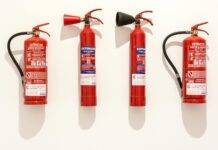
Radiography Safety Quiz at Oil and Gas Worksite
Radiography Safety Quiz : Radiography plays a crucial role in the oil and gas industry, aiding in inspections and maintenance tasks. However, it also comes with potential risks that need to be managed effectively to ensure the safety of workers and the environment. This radiography safety quiz will test your knowledge about the essential aspects of radiography safety in oil and gas worksites. Let’s dive in and see how much you know!
Introduction to Radiography Safety
Radiography involves the use of X-rays or gamma rays to inspect materials and structures for flaws and defects. While it is a valuable tool in the oil and gas industry, it poses radiation hazards that demand careful precautions.
The Importance of Radiation Safety in Oil and Gas
Radiation exposure can lead to severe health risks, such as radiation burns and long-term health effects. Implementing radiation safety measures is paramount to protect workers, the public, and the environment.
Understanding Radiation Hazards
Learn about ionizing and non-ionizing radiation, their potential dangers, and how they are controlled to minimize risks at worksites.
Personal Protective Equipment (PPE) for Radiography
Discover the essential PPE required for radiography activities, including lead aprons, gloves, and dosimeters, and understand their role in shielding against radiation exposure.
Safe Work Practices During Radiography
Explore best practices for setting up radiography equipment, maintaining safe distances, and ensuring the security of the work area to prevent accidents.
Emergency Procedures and Contingency Plans
In emergencies, knowing how to respond swiftly and effectively can save lives. Learn about emergency procedures and plans specific to radiography incidents.
Monitoring and Measurement of Radiation
Delve into the methods and devices used to monitor radiation levels in real-time, ensuring that exposure remains within permissible limits.
Regulations and Guidelines for Radiography Safety
Stay informed about relevant regulations from organizations like the Occupational Safety and Health Administration (OSHA) and the International Atomic Energy Agency (IAEA) that govern radiography safety.
Handling and Disposal of Radioactive Materials
Properly managing radioactive materials is essential for preventing contamination and ensuring the safe disposal of waste generated during radiography processes.
Training and Qualifications for Radiography Personnel
Explore the training and certification requirements that radiography personnel must meet to perform their duties safely and efficiently.
Common Myths and Misconceptions about Radiography Safety
Dispelling common misconceptions about radiography safety helps create a more accurate understanding of the associated risks and precautions.
Advancements in Radiography Technology and Safety
Discover how technological advancements are enhancing radiography safety through innovations like digital radiography and robotics.
Case Studies: Radiography Incidents and Lessons Learned
Examining past incidents provides valuable insights into the consequences of inadequate radiography safety measures and underscores the importance of adherence to protocols.
Best Practices for Promoting Radiography Safety
Summarize the key takeaways from the quiz and emphasize the role of a safety-first mindset in preventing radiography-related accidents.
Radiography Safety Quiz
Welcome to the Radiography Safety Quiz! This quiz will assess your understanding of radiography safety practices in oil and gas worksites. Answer the multiple-choice questions below to test your knowledge and learn more about staying safe while working with radiography equipment. Let’s get started!
Quiz Questions
1. What is the primary purpose of radiography in the oil and gas industry?
a) Providing entertainment for workers
b) Inspecting materials and structures for defects
c) Generating heat for industrial processes
d) Creating colorful images of equipment
2. Why is radiation safety crucial in oil and gas worksites?
a) To prevent equipment malfunction
b) To ensure accurate radiography results
c) To protect workers and the environment
d) To reduce noise pollution
3. Which type of radiation is commonly used in radiography?
a) Ultraviolet radiation
b) Infrared radiation
c) X-rays and gamma rays
d) Radio waves
4. What is the purpose of personal protective equipment (PPE) in radiography?
a) To enhance the quality of radiography images
b) To make workers feel comfortable
c) To shield against radiation exposure
d) To increase worker mobility
5. Which of the following is a safe work practice during radiography?
a) Standing close to the radiation source
b) Eating and drinking near radiography equipment
c) Keeping a safe distance from the radiation source
d) Wearing regular clothing without PPE
Confined Space Safety Quiz – Test Your Safety Knowledge
Fire Safety Quiz : Test Your Safety Knowledge
Certified Safety Professional Salary
HSE Engineer and HSE Officer Jobs : Urgent Requirement in UAE
6. In case of a radiography emergency, what should workers do first?
a) Continue working to finish the task
b) Evacuate the area immediately
c) Check social media for updates
d) Share the emergency on the radio
7. How is radiation exposure monitored at worksites?
a) By listening for unusual sounds
b) Using a Geiger counter
c) Observing changes in weather patterns
d) Measuring light intensity
8. Which organization provides regulations and guidelines for radiography safety?
a) World Wrestling Entertainment (WWE)
b) International Space Station (ISS)
c) Occupational Safety and Health Administration (OSHA)
d) Food and Drug Administration (FDA)
9. What should workers do with radioactive waste after radiography activities?
a) Bury it in the ground
b) Throw it in regular trash bins
c) Dispose of it following proper protocols
d) Sell it to a recycling facility
10. Why is training important for radiography personnel?
a) To improve their typing skills
b) To make them more sociable
c) To ensure they understand safety protocols
d) To teach them how to operate heavy machinery
Quiz Answers
- b) Inspecting materials and structures for defects
- c) To protect workers and the environment
- c) X-rays and gamma rays
- c) To shield against radiation exposure
- c) Keeping a safe distance from the radiation source
- b) Evacuate the area immediately
- b) Using a Geiger counter
- c) Occupational Safety and Health Administration (OSHA)
- c) Dispose of it following proper protocols
- c) To ensure they understand safety protocols
Conclusion
Congratulations! You’ve completed the Radiography Safety Quiz and tested your knowledge of radiography safety practices in oil and gas worksites. Remember that radiography safety is essential for protecting yourself, your coworkers, and the environment. By staying informed and following safety protocols, you contribute to a safer and more productive work environment.
FAQs
1. What is radiography, and how is it used in the oil and gas industry? Radiography involves using X-rays or gamma rays to inspect materials and structures for defects. In the oil and gas industry, it’s employed to detect flaws in pipelines, tanks, and other critical equipment.
2. Why is radiation safety important in oil and gas worksites? Radiation exposure can lead to severe health risks, making it crucial to implement safety measures to protect workers and the environment.
3. What are some common personal protective equipment (PPE) used in radiography? Lead aprons, gloves, and dosimeters are commonly used PPE to shield workers from radiation exposure.
4. How do advancements in technology contribute to radiography safety? Technological advancements like digital radiography and robotics enhance safety by reducing human exposure to radiation and improving accuracy.
5. What should workers do in case of a radiography emergency? In case of an emergency, workers should follow established emergency procedures, evacuate if necessary, and seek medical attention if exposed to radiation.

























sir safety lead auditor notes?
i have complete ISO 45001:2018
Give me some time.
I will update